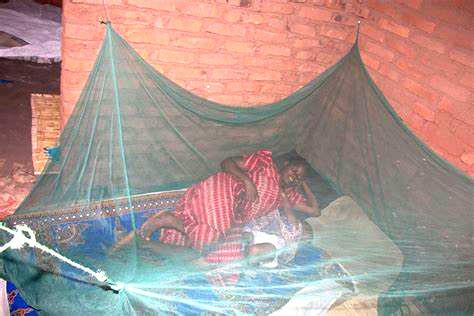The Oshikoto health and social services directorate recorded one malaria-related death and 41 new malaria cases in the region last week.
This brings the total number of malaria-related deaths in the region to eight since the outbreak in November 2024, with 602 confirmed cases.
The directorate’s head Joshua Nghipangelwa told Nampa on Monday that 90 malaria cases were imported from Angola, while 512 cases were locally transmitted.
The outbreak has affected all three districts in the region – Omuthiya, Onandjokwe and Tsumeb.
Nghipangelwa noted that more men than women have been infected, with the highest number of cases recorded in villages bordering Ohangwena region.
“Most of our cases are recorded from the Nehale lyampingana, Okankolo and Eengodi constituencies. Many of the imported cases are linked to cattle herders from Angola,” he said.
Nghipangelwa added that the directorate is facing multiple challenges in controlling the outbreak, including delays in case reporting due to poor network connectivity, shortages of key medications like primaquine and limited stocks of other essential supplies.
“The non-functional malaria divisions, late health-seeking behaviour, a knowledge gap in community members as well as inadequate vehicles to carry out activities, such as community mobilisation and focused investigations, continue to challenge the directorate,” he said. Despite these difficulties, the directorate has intensified efforts to combat the outbreak.
Measures include social mobilisation campaigns, targeted larvicide in high-risk areas and sensitisation meetings with stakeholders.
“We are conducting desk reviews and focused investigations, distributing malaria awareness posters at health facilities, and using radio talks to spread awareness,” he said.
Additionally, there are plans to establish health posts in the most affected areas and recruit more community health workers to improve case detection and treatment.
The health ministry earlier this year issued a public notice about the increasing number of malaria cases in most of the endemic regions of the country.
By 15 December 2024, a total of 2 237 malaria cases were reported in Namibia.
The affected districts included Eenhana, Okongo, Outapi, Engela, Nkurenkuru, Oshikuku, Omuthiya, Oshakati, Onandjokwe, Tsumeb, Rundu, Okahao, Tsandi, Ncamagoro, Nyangana and Andara.
Executive director in the ministry Ben Nangombe said Namibia usually experiences seasonal malaria transmission.
Seasonal peaks start in December and last to late April.
“This is because the increased rainfall creates ideal breeding conditions for Anopheles mosquitoes, which transmit the malaria parasite. Puddles of water, stagnant pools and other water bodies, which form as a result of rain, provide mosquitoes with ample sites to lay their eggs. As a result, mosquito populations increase, heightening the likelihood of malaria transmission as the mosquitoes bite and infect humans,” he stated.
Nangombe give an assurance that the ministry has robust surveillance systems in place and is on high alert to detect and monitor malaria cases in all regions.
– Nampa
-Additional reporting by Paheja Siririka


